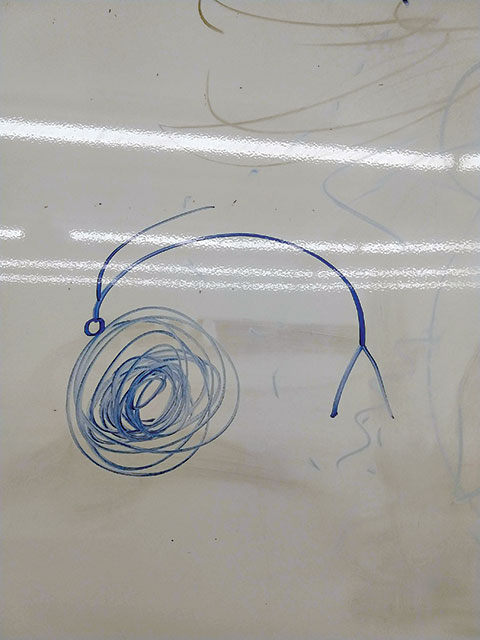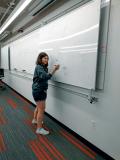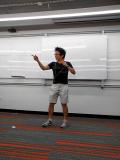Drawing Physics: ILLINOIS TECH CHAPTER BUILDS COMMUNITY THROUGH PICTIONARY
Winter
2020
Feature
Drawing Physics: ILLINOIS TECH CHAPTER BUILDS COMMUNITY THROUGH PICTIONARY
Alexandra Detweiler, SPS Chapter President, Illinois Institute of Technology
Physics is hard. It’s so hard that it’s easy for students to burn out if they’re constantly focusing on lectures, readings, assignments, and projects. One of the most important things about SPS is that it brings physics students together, building community and reminding students that they’re not alone. At Illinois Institute of Technology, our chapter is always looking for new ways to achieve this. Recently, some of our most successful attempts at bringing the physics department community together socially have been games of physics-themed Pictionary.
Here’s how it works: Our chapter first sends out a form on which anyone can submit physics topics for the game. These submissions might include famous physicists (Niels Bohr), physical objects (quasars), laws or theorems (BCS theory), physical processes (photoelectric effect), or concepts (spaghettification). Everyone has different areas of specialization and interest, so the suggestions always span a wide variety of topics.
Just before the event, the topics are printed, cut out, and placed in a hat. Participants are then split into two teams—undergraduates (who get their own team because their attendance is usually much larger) and not-undergraduates (i.e., graduate students and department faculty). The rules are simple: Teams alternate picking a volunteer to select a topic from the hat. The volunteer then has one minute to assist their team in guessing the topic by drawing on the whiteboard. If the team guesses the topic within one minute, a point is earned. If not, the other team has 30 seconds to guess correctly and “steal” the point. We’ve added a few additional rules as well. For instance, if a volunteer picks a topic and doesn’t know what it means, they have the option of either googling it or putting it back and drawing a second. Also, when the volunteer is drawing on the board, no speech, letters (Latin, Greek, or otherwise), or numbers are allowed.
We’ve found this game to be a great way of introducing new students to the department (especially when the event is held a few weeks into a new academic year); creating some friendly competition, which heightens engagement; and inspiring lots of laughs. The looks on volunteers’ faces when they’ve picked a topic they know will be tricky to draw, the objectively awful visual interpretations that are somehow still guessed correctly, and the sound of crickets as a volunteer enthusiastically points to their drawing again and again never fail to spark laughter. We hope that this article inspires your chapter to give our favorite game a try; we expect that it will positively affect your department as it does ours!




